|
|
 Jen Jen |
 |

|
|
He Had It Coming: Four Murderous Women and the Reporter Who Immortalized Their Stories
Kori Rumore and Marianne Mather
When I first saw the title, “He Had It Coming”, I instantly thought of the musical “Chicago,” which is exactly what was supposed to happen. This book takes a look at four of the women in the musical, which was originally a play written by Maurine Dallas Watkins. The book also delves a fair amount into the playwright of “Chicago,” who was a reporter at the Chicago Tribune for a very short time (short enough to make one wonder if she ever intended to be a reporter long-term or was just gathering material.) 1920s jazz-era in Chicago is interesting enough for a book, but to focus on four women on “Murderess Row” is even more interesting. It’s hard to say whether there was more drama occurring in the courtroom where these women were tried or on stage with the productions!
I listened to this book on Libro.fm
|
| |
|
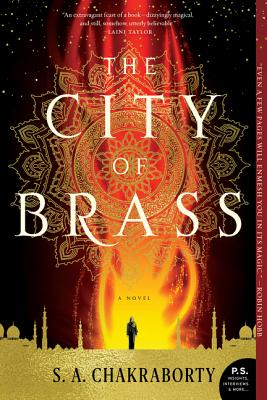
|
|
City of Brass
S.A. Chakraborty
Some time ago, I took this book home for my husband to read because it looked like his kind of book, and I was right. After finishing City of Brass (the first in the Daevabad trilogy), he read Kingdom of Copper (#2 in the series) and now he’s nearly done with the penultimate, The Empire of Gold. At some point he said to me, “I think you would like this.” And then, “I *really* think you would like this.” And finally, “HERE, READ THIS.” :) So I’m nearly done with City of Brass and glad we have Kingdom of Copper at the ready. The Daevabad Trilogy is adult fantasy set in 18th century Middle East. The two protagonists are Nahri, a con woman who makes her living stealing and swindling in Cairo and Ali, a Djinn prince. I love the familiar elements of the genre as well as the new-to-me setting and language. (Word to the wise—there’s a glossary plus a list of characters in the back!) In City of Brass, Nahri accidentally summons Dara, a Djinn warrior (it happens, right?) and soon finds herself on a journey to the City of Brass, where Ali and his family live.
|
| |
|
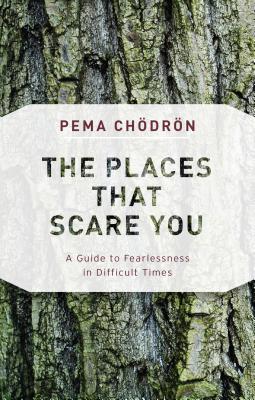
|
|
The Places That Scare You:
A Guide to Fearlessness in Difficult Times
Pema Chodron
More Pema Chodron? Yes, more Pema Chodron. Like the previous Chodron books I read, The Places That Scare You offers short, daily readings in which I find of great comfort. |
| |
|

|
|
Red Stilts
Ted Kooser
This is the newest collection from Nebraska poet Ted Kooser, who served two terms as the Poet Laureate of the United States. Kooser has well established himself as a poet for the everyday reader, finding resonance and depth in accessible language. As a teaser, here is one of the poems from Red Stilts, as found on the publisher’s website.
Tarnish
Unrolled from a sleeve of green felt
after years in a chest in the attic,
the family silverware has gone ghostly
with inky fingerprints of tarnish,
which for years have been feeling
their way forward through time
in the manner that flat black paint
on the back of a mirror picks its way
through to the front, as if wanting to
take part in whatever’s reflected,
in this instance a very old woman
bent alone at her table, peering down
into the past in the bowl of a spoon.
Note to poetry lovers—there are a lot of big-name poets releasing collections right now! Billy Collins just released Whale Day and Barbara Kingsolver just released How To Fly (in Ten Thousand Easy Lessons). |
| |
|
|
|
|
|
 Sally Sally |
|

|
 |
American Gospel
Lin Enger
The word gospel means “good news,” and Enoch Bywater, a self-styled preacher with a ministry at the Last Days Ranch in northern Minnesota believes he’s heard the best news of all. During an incident of Sudden Cardiac Death, Enoch had a vision of the Rapture, and believes God told him the date it would happen: August 19, 1974, two weeks away.
Events move quickly after this revelation. Enoch leaves the hospital to begin preparations at the Last Days Ranch for the crowds of the faithful whom he is sure will come. He also manipulates his son, Peter, to return from New York City for the event, and convinces a former neighbor, now a Hollywood actress, to return as well.
The novel is plot-driven, and moves quickly, often with gentle humor. Events in the book occur against the backdrop of Nixon’s resignation from the presidency, and the political maneuvering around it, reminding readers of political tension earlier in our history as a nation.
Like to guess how a book will end? Chances are you won’t be able to do it with this book!
|
| |
|

|
|
The Cold Millions
Jess Walter
Orphaned brothers Gig and Rye Dolan are penniless, riding the rails and living by their wits. They find themselves in Seattle in 1909 and Gig, an ardent supporter of the Wobblies, becomes involved in the free speech riots. He tries unsuccessfully to shield Rye, but both brothers are arrested and jailed. There are strong similarities between their experiences and those of protesters in the Black Lives Matter demonstrations of recent months. Walter has written a highly entertaining work of historical fiction which brings to life a nearly forgotten part of our past. The novel includes both fictional and historical characters, some fighting against injustice and others perpetuating it for their own gains.
The Cold Millions reminded me of an incident in my family. In the early part of the last century, my grandmother’s father abandoned his wife and four children. Soon after, my grandmother’s mother died, and the children were farmed out to family members. The oldest brother ran away. Years later, my grandmother learned he had been killed in the longshoremen riots on the west coast. Not the same story, but enough similarities to pique my interest.
|
| |
|

|
|
Life is in the Transitions
Bruce Feiler
In the early years of our marriage, Bob was in school for seven years. From time to time, I’d moan about being stuck in student life and his response was always, “We’re in transition.” My retort was, “No, this is our life.” Well, it turns out that he was right after all, darn it!
A colleague recommended Life is in the Transitions and I found the book to be more timely than the author could have imagined. The book is about significant life changes, which Feiler calls “lifequakes.” That’s an accurate description of my life in this time of pandemic. How about yours? Feiler rejects the older idea that we live our lives in linear fashion, going through predicable stages. Instead, he believes that we experience significant upheavals repeatedly throughout our lives. Such upheavals in the life of his own family prompted Feiler to begin the Life Story Project. He solicited stories from 225 people across the country, and analyzed them using a number of variables. The stories are found throughout the books. ( I was surprised and delighted that I know one of the people—Elisa Korenne. She wrote Hundred Miles to Nowhere and has been in the store several times for events, so you may know her, too.)
Feiler gives a number of strategies to cope with lifequakes. He closes by emphasizing the importance of telling the story of one’s life. As someone whose life is rooted in storytelling, I particularly appreciate this.
|
| |
|
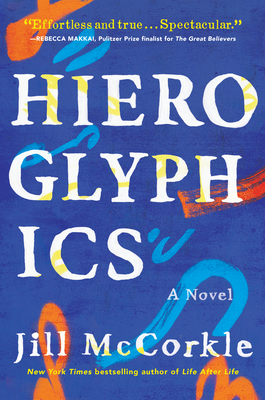
|
|
Hieroglyphics
Jill McCorkle
Four characters narrate this book: Lil and Frank, a couple in their 80’s, Shelley, a timid single mother, and Harvey, her young son, who is self-conscious about his repaired cleft palate. Lil and Frank have recently moved to North Carolina, where Frank spent part of his growing up years in the house in which Shelley and Harvey now live.
Frank and Lil were brought together by an odd coincidence: each lost a parent while in childhood, and this has continued to influence their lives. Shelley is unable to be honest, even with herself, about the circumstances of her life. Harvey is and worryingly obsessed with serial killers and ghosts.
Lil’s voice is the most predominant, as she reviews notes she had taken over the years. She reflects on Frank’s infidelity and their reconciliation, is bluntly honest about their children’s characters, and recalls her dance studio, a source of joy and meaning.
This is not a feel good book, but it is a thoughtful reflection on the ways we are marked by death and other forms of loss.
I listened to the book on Libro.fm and appreciated the reader, who did a particularly good job with Lil’s voice.
|
| |
|

|
|
Jack
Marilynne Robinson
Marilynne Robinson has created the mythical world of Gilead, Iowa, the setting for her novels Gilead, Home, and Lila. The bedrock in these books is the friendship between John Ames and Robert Boughton, as children, as pastors, as fathers, and as old men.
A shadowy character in these books is Robert’s son Jack, named after John Ames, who is beloved but disappoints his family again and again. They struggle to understand him, and he struggles to understand himself. As a child, he frequently disappeared, and that continues into adulthood.
In Robinson’s latest novel, Jack, we finally hear from Jack himself. He is a tortured soul—a drunk, a ne’er do well, a petty thief, but also well-read, thoughtful, and intelligent. Jack has a romance with Della Miles, a teacher who, like him, is a PK (Preacher’s Kid.) But Della is Black, and their relationship is not only ill-advised, it is illegal in St. Louis at the time. Their star-crossed love particularly resonates during our current national conversation about race.
Jack proclaims himself as atheist, but his thoughts and words are deeply theological. His story is shot through with reflections on grace, predestination, and perdition.
To enter the world of the Gilead books is to enter sacred space, filled with wonder, complexities, and paradoxes.
|
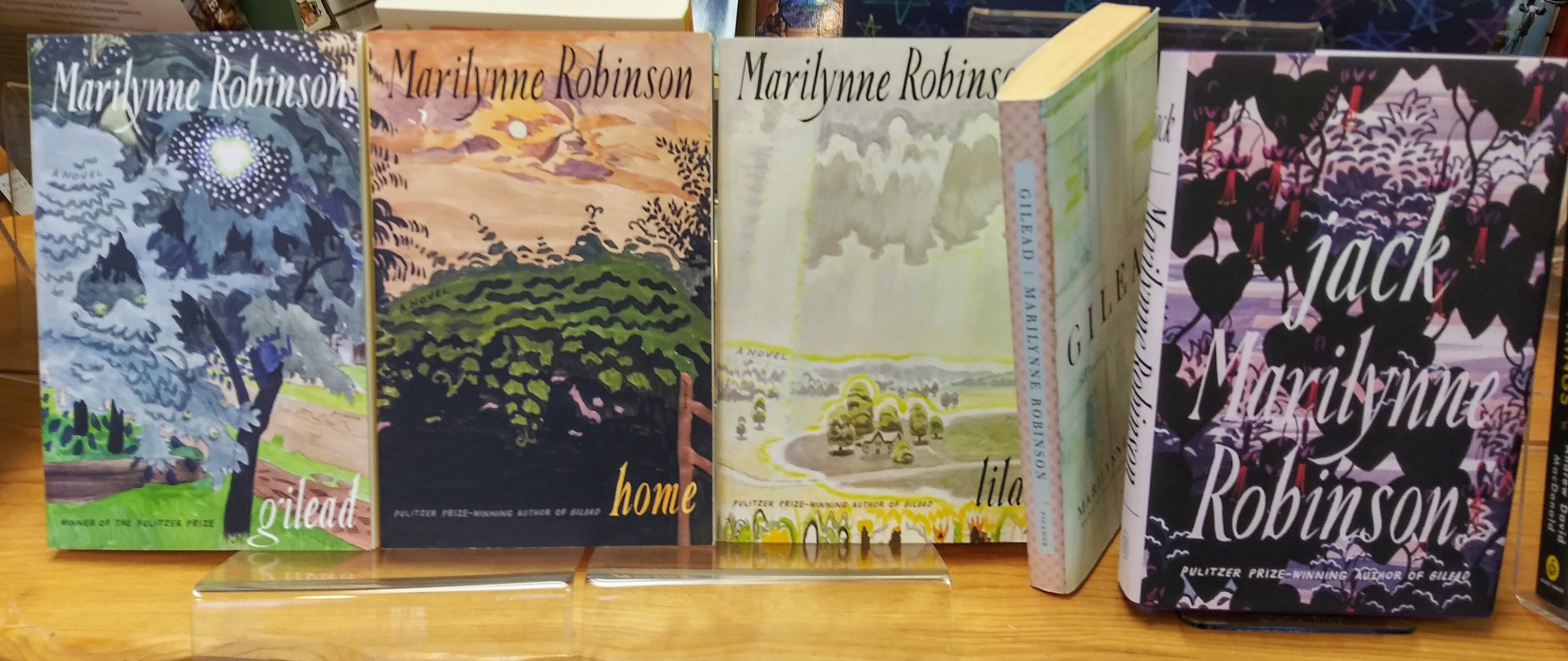 |
| |
|
|
|
|
|
| |
|
|
|
|

Bob |
|
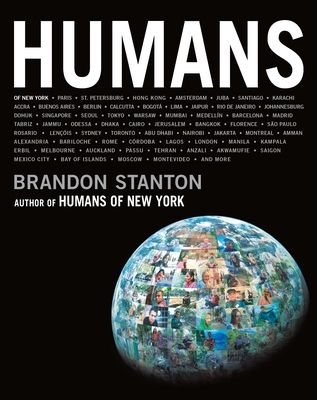
|
|
Humans
Brandon Stanton
I really wasn’t getting into the Sci-Fi book I was reading when Sally handed me this book and said, “Look this over.” She said she’d be interested in my point of view as the book covers a lot of the world and I had lived in some of the places mentioned. Hmm, well, I’ll give it a quick scan. The book was written by a person that photographed people in faraway places with strange-sounding names. It contains some superb photos, so I suppose technically it’s a picture book. Yeah, yeah. The book also offers conversations the photographer had with his subjects while taking his shots, and this makes a world of difference. Most of the writing accompanying a photo, takes a few paragraphs, although there are some that are a single sentence, such as “We’re gonna crash” and one that’s several pages covering over 40 years of one fellow’s life. All of it is fascinating and makes you realize that no matter where you live, we’re all alike and also that there are people out there who have had really different experiences in their lives. It’s a coffee-table book that you want to keep reading because of all the diversity/stories. I really recommend you check this book out.
Note: this book will be released on October 6.
|
| |
|
|
|
|
|

Gail |
|
 |
|
|
| |
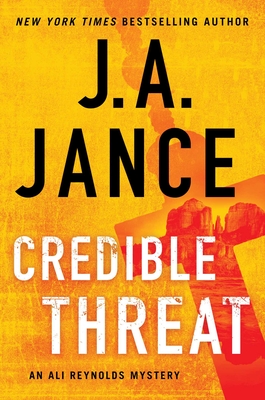
|
|
Credible Threat
J.A. Jance
Archbishop Francis Gillespie and his driver slow their car before exiting the archbishop’s compound. As they wait for traffic, a person in a hoodie steps up to the car. As the driver lowers his window, the man (or is it a woman?) shoots into the car! J.A. Jance, with over 60 books to her name, has written another blockbuster. Credible Threat is a part of the Ali Reynolds mystery series. Another series has Joanna Brady as the protagonist. Both are set in Arizona which is fun for me as I recognize streets and landmarks in the stories. Her third mystery series has J.P. Beaumont as the protagonist and those stories are set in Washington state, another place where we have spent a lot of time. You can't go wrong with J.A. Jance books. They are top notch mysteries.
|
| |
|
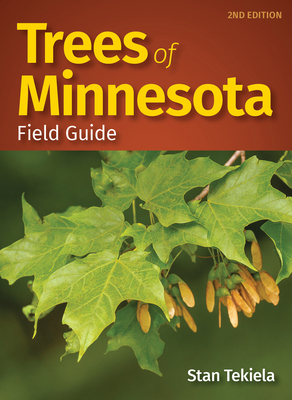
|
|
Trees of Minnesota
Stan Tekiela
Do you know what the Minnesota State tree is? Keep reading. At this time of year, we are all enjoying the change of tree colors. If you ae interested in why some are yellow, some red, and some bronze, a good book to carry with you is this guide. It not only gives you tremendous pictures of each tree, flowers and fruits are also included. At the bottom of each description page are Stan's notes, which give you interesting facts. The Red Pine is our state tree. You may have said Norway Pine which is another name for the Red Pine. |
| |
|

|
|
Unsheltered
Barbara Kingsolver
Unsheltered is a novel about two families living at the corner of 6th and Plum in Vineland, New Jersey, but a century apart. In both cases, their homes are falling down around them. But that’s only a small part of the problems that beset them. Thatcher Greenwood is a science teacher, who is not allowed to speak to his students about the exciting work Charles Darwin is doing on evolution. His friendships with a woman scientist and a renegade newspaper publisher draws him into deep trouble with the town fathers. In the modern day story, Willa and her husband, following all the rules as professionals and responsible parents, find they have nothing to show for their hard work but debts and disappointments. Kingsolver shows us that life in precarious times in the past has failed to prepare us for the precarious future. A very timely book. |
| |
|
|
|
|
|

Hannah |
|
 |
|
|
|
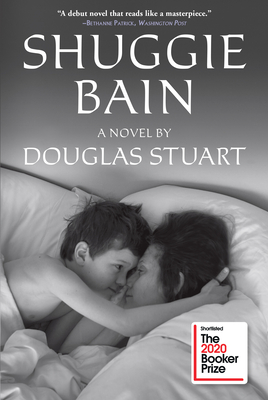
|
|
Shuggie Bain
Douglas Stuart
Shuggie Bain is a coming of age novel about a gay boy in 1980s Glasgow, a rough town, by a beautiful alcoholic mother. It’s a story about poverty, loneliness, and pain, but it’s also a story about resilience and great love. Shuggie’s mother is a nightmare, but the novel treats her with immense compassion. Perhaps the book should have been named Shuggie and Agnes Bain.
I learned about this book through a virtual reading and interview with Elizabeth Berg, who has a series of programs dedicated to introducing authors she admires. Stuart, a fashion designer in New York, started writing Shuggie Bain as a way to process his own history. It’s not a memoir, but the emotions reverberate in a way that convinces you that they are felt by the author. His writing is powerful: the novel is shortlisted for the 2020 Booker Prize.
Note: the paperback of this book will be released
October 13.
|
| |
|
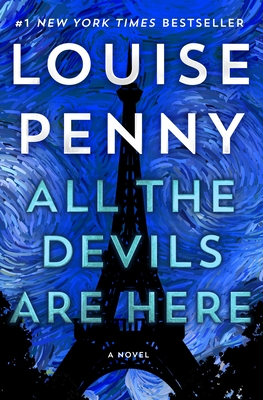
|
|
All the Devils Are Here
Louise Penny
All the devils are in Paris, along with the entire Gamache family. I thought I would miss the Chief Inspector’s "chosen family," our dear friends in Three Pines, but I didn’t mind because the book is such a delight. If you don’t know what I’m talking about, I highly recommend that you find out. Start with the first book in this deservedly popular series, 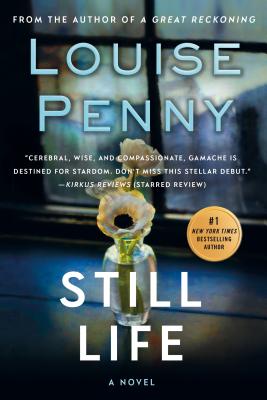 Still Life. For those of you who already know and love Armand, I greatly enjoyed getting to know the family better, romping through Paris, and being totally caught up in the plot. I finished reading All the Devils Are Here the day after I started it. Still Life. For those of you who already know and love Armand, I greatly enjoyed getting to know the family better, romping through Paris, and being totally caught up in the plot. I finished reading All the Devils Are Here the day after I started it. |
| |
|
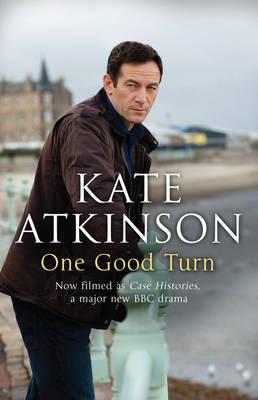
|
|
One Good Turn
Kate Atkinson
Each of the first several chapters in this book is from the point of view of a different person, each somehow connected to a violent incident that happens at Edinburgh’s annual festival. It’s impossible to imagine how these disparate people will come together into a single plot, but they do, in a very satisfying way. One (very) Good (page) Turn(er).
|
| |
|
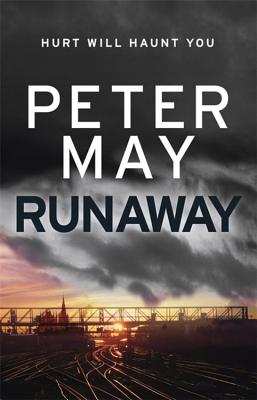
|
|
Runaway
Peter May
This novel is a Scottish version of Spike Lee’s movie Da 5 Bloods. Four old men travel to the scene of an intense, mad experience they shared when they were young. There were originally five friends, but one didn’t survive to come home. In Runaway, the teenage boys went to London, thinking they could make it as musicians. When they return as old men, one of them has terminal cancer and is near death, and he persuades the two others still living in Glasgow to join him on a mysterious mission. A pudgy grandson who does nothing in life but play video games is coerced into driving them. Adventures, and character revelations, ensue.
Note: this book is out of print, but we’re able to secure copies on the used book market.
|
| |
|
|
|
|
|
| |
|
|
|
|

Tim
|
|

|
|
Intimations
Zadie Smith
Like many an elderly person (though it pains me to admit I’m ‘elderly’) I wake during the night to use the necessary and when I come back to bed, I find myself unable to go back to sleep. I’ve come to accept this state of affairs, pile my pillows behind my back, and settle into a dozen pages of something I’ve maybe been having a little trouble reading, something I’ve taken a couple of runs at. Perhaps it has proved to be difficult to follow the thread of the author’s intent, or something I haven’t thought about as much as I think it deserves. Zadie Smith’s Intimations is such a book. It’s a slim volume of thoughtful essays, or meditations, about this odd and difficult year we’ve been living through. I suppose my amazement has a bit to do with the speed with which her book has come to be published, but primarily my interest has been in her uncanny ability to name some of the causes of unease that we’re experiencing. Situations become less fraught with unease when you begin to see their contours, and so much of what we’re hearing and experiencing is just formless noise…. It’s nice to have a clear voice begin to make sense of it. I read a bit, turn off the light, nestle into the pillows and drift off, knowing just a little bit better how I might make sense of what will be waiting for me in the morning. This would be a great book group pick. It’s short, but will yield lots to talk about.
|
| |
|
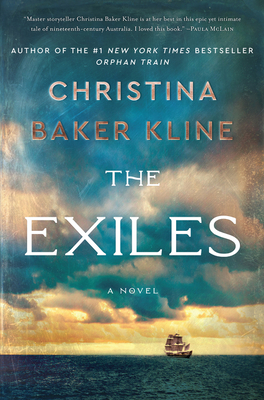
|
|
The Exiles
Christina Baker Kline
Jen recommended… No, in truth, she put this book in my hands and said, "Here, read this, you’ll like it,” and I did, unreservedly. Many people do not know that a large portion of Australia’s first settlers were convicts transported from Great Britain. Thousands, maybe hundreds of thousands, of convicts were forcibly taken to Australia and New Zealand in the early 19th century. Even less known is that in order to provide a “settling influence” over the transported population of male convicts, female convicts were transported as well. Exiles is a fictional account of a group of these women, and their struggles to survive halfway around the world, in the “lands beyond the seas.” The writing is smooth and the plot has some real surprises and twists. If you’re feeling the need for a bit of well written escapist historical fiction, take a look at this book. I couldn’t put it down. It would be another good book group pick. |
| |
|
|
|
|
|
| |
|
|
|
|
Guest Review by Lyn
Note: this review was recently published, in a slightly different form, in the Park Rapids Enterprise. It is included here with the author’s permission.
|
|
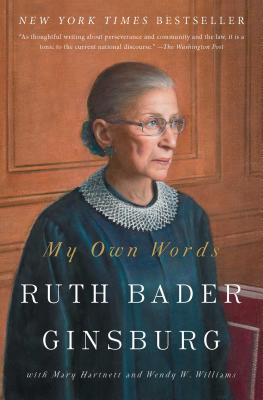
|
|
My Own Words
Ruth Bader Ginsburg
Born on March 15, 1933, Supreme Court Justice Ruth Bader Ginsburg, the second woman to serve on the Supreme Court, passed away on September 18, 2020.
In 1975, I was a newly minted college graduate with my first job as an English teacher in a small town in North Dakota. I was renting a house and needed to purchase some things. My mother had always shopped at Sears, so to Sears I went, and with great pride, indicated that I wanted to apply for a credit card. The first question I was asked was for my husband’s name. I reminded the clerk that the law had recently changed (this had happened in 1974) and I could have a credit card in my own name. Her reply was that she had forgotten that; and proceeded with my application. It was thanks in no small part to the efforts of Ruth Bader Ginsburg that I could take out that credit card.
Ruth Bader Ginsburg’s legacy is enormous and the book, My Own Words is a wonderful way to learn not only about her life through reading her own writings, but to get a first-hand look at the workings of the Supreme Court. However, the book is not all essays and briefs or dry history, but also filled with accounts of the many friendships she developed with Justices, even with those who had differing views than she, such as Justice Antonin Scalia. The Scalia/Ginsburg Opera is a lovely example of two different people working together for the good of the whole. Although the opera might be a novel way to express one’s faith in the Constitution, their words clearly embrace our founding fathers’ vision of the importance of diversity of opinion on the Bench. From their duet:
“We are different.
We are one.
The U.S. contradiction –
the tension we adore.
Separate strands unite in friction,
To protect our country’s core.
This, the strength of our nation,
This is our Court’s design.”
RBG was proud that the Justices remain collegial, despite strong disagreements and differences of opinion. Even in our small community, differences of opinion have resulted in name calling and unheard-of numbers of political signs being stolen out of people’s yards. Perhaps in the same way that stealing an opponent’s signs is no way to show faith in your candidate, RBG reminds us that fearing diversity of opinion is no way to express faith in our Constitution. RBG’s words reminds us that the Constitution expects that the Supreme Court Justices will make their best possible decisions based on the rule of law, and that even if their opinions are unpopular, they must never shirk from that responsibility. As our nation mourns the passing of Supreme Court Justice Ginsburg, her book is a timely reminder that the strength of our nation lies in our diversity. R.I.P, RBG.
|
| |
|
|
|
|
|
Would you like to be a guest reviewer?
Email Sally at sally@beagleandwolf.com |
| |
|
|
|
|
|
— page top —
|
|



 Jen
Jen


 Sally
Sally






















